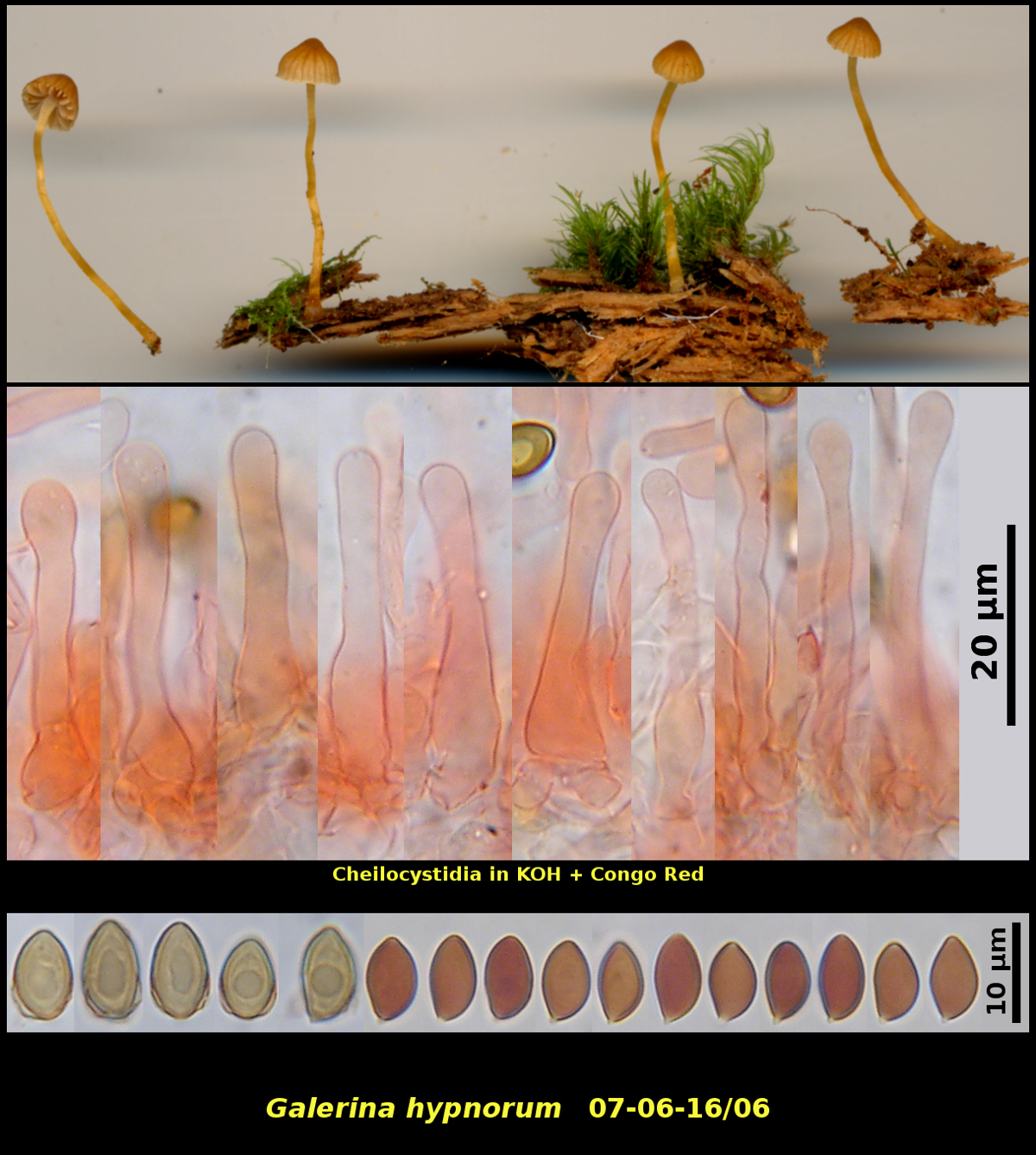Fleshy Fungi of New Brunswick >>
Galerina hypnorum
Galerina hypnorum (Schrank) Kühner

Scattered (4) amongst mosses on a decayed conifer log in a fairly mature spruce-fir forest, 1.8 km SE of Letang, New Brunswick (07-06-16/06)
Basidiospores orange-brown in spore print, inequilaterally ovoid, usually with a conical apex, nearly smooth to very finely roughened, without a distinct plage, calyptrate in 5% KOH, strongly dextrinoid in Melzer’s Solution, 7.9-9.0 X 4.6-5.3 µm, D/d = 1.56-1.86 (average[28]: 8.4 X 4.9 µm, D/d = 1.73). Cheilocystidia forming a continuous sterile margin, ventricose-rostrate, usually slightly swollen at the apex, 33-42 X 4.5-8.0 µm. Pleurocystidia lacking. Clamp connections present but often inconspicuous.
Galerina hypnorum is one of several members of the genus found among mosses on rotting logs. Although these species are extremely difficult to differentiate macroscopically they can be grouped with some confidence microscopically. Mounted in KOH, many of the basidiospores of G. hypnorum reveal characteristic "ears" caused by the loosening of the outermost wall layer. Spores of this type are said to be calyptrate and can be observed in several species of Galerina, such as G. cerina and G. sphagnicola. The basidiospores in the plate here were photographed partly in Melzer's Soltion and partly in KOH. Those in KOH clearly show the calyptra, while those in Melzer's Solution mostly do not.
You may have noticed the size difference in the basidiospores photographed in the two mounting media. The ones photographed in Melzer's Solution were taken from a spore print and can be assumed to be mature. Those mounted in KOH were taken from a piece of lamella from the same fruiting body used for the spore print. The size difference is real. Read the comments under G. sphagnicola for further discussion of this phenomenon.
In common with several other species of Galerina, the name G. hypnorum has been used for several similar but different mushrooms. Usage of the name is still not entirely settled, but we have followed the concept presented in Funga Nordica as being representative of Collection 07-06-16/06.
Photographs: D. Malloch (07-06-16/06/06).